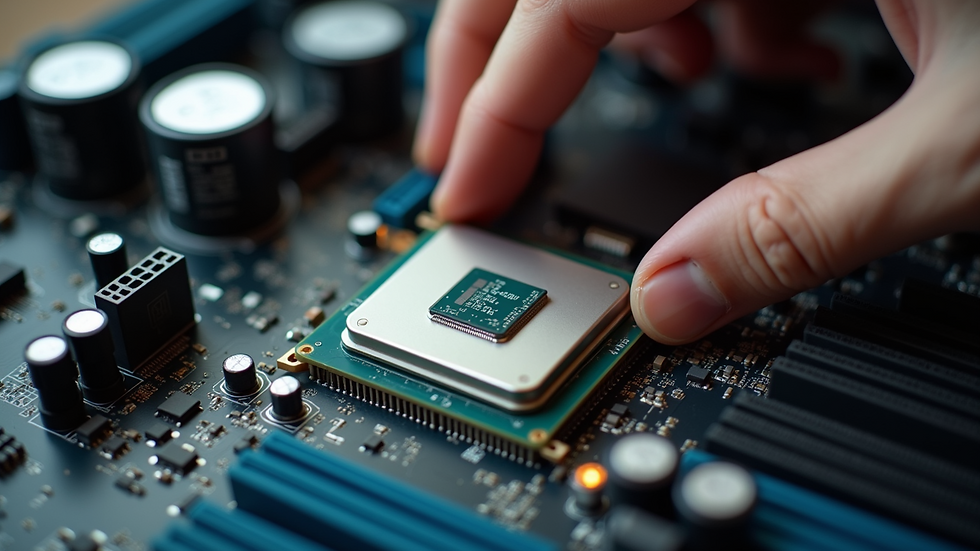Cost-Effective PC Component Installation Solutions
- papabearfrancis8
- Sep 7
- 4 min read
Building or upgrading a PC can be an exciting journey. However, it can also be a daunting task, especially when it comes to installing new components. Many people worry about the costs involved, both in terms of purchasing parts and hiring professionals for installation. Fortunately, there are several cost-effective solutions that can help you install PC components without breaking the bank. In this post, we will explore practical tips and tricks to make your installation process smoother and more affordable.
Understanding Your PC Components
Before diving into installation solutions, it is essential to understand the components you will be working with. A typical PC consists of several key parts:
Motherboard: The main circuit board that connects all components.
CPU (Central Processing Unit): The brain of the computer, responsible for processing instructions.
RAM (Random Access Memory): Temporary storage that helps your computer run applications smoothly.
GPU (Graphics Processing Unit): Handles rendering images and video.
Storage (HDD/SSD): Where your data is stored.
Knowing these components will help you identify what you need to install and how to approach the task.
DIY Installation: A Cost-Effective Approach
One of the best ways to save money on PC component installation is to do it yourself. Here are some steps to guide you through the process:
Gather Your Tools
Before you start, make sure you have the right tools. You will need:
A screwdriver (usually a Phillips head)
Anti-static wrist strap (to prevent static damage)
Cable ties (for organization)
A clean workspace
Having these tools on hand will make the installation process much easier.
Follow Online Tutorials
The internet is full of resources that can help you with your installation. Websites like YouTube and tech forums offer step-by-step guides. Look for videos that match your specific components. Watching someone else perform the installation can give you the confidence to do it yourself.
Take Your Time
Rushing through the installation can lead to mistakes. Take your time to read manuals and follow instructions carefully. If you encounter a problem, don’t hesitate to pause and research the issue.
Cost-Effective Component Options
If you are looking to save money on components themselves, consider these options:
Buy Used or Refurbished Parts
Many people upgrade their PCs and sell their old components. Websites like eBay or local marketplaces can be great places to find used parts at a fraction of the cost. Just make sure to check the seller's ratings and return policies.
Look for Sales and Discounts
Keep an eye out for sales events, especially during holidays or back-to-school seasons. Retailers often offer significant discounts on PC components. Signing up for newsletters can also alert you to special promotions.
Consider Budget Brands
While high-end brands may offer better performance, budget brands can provide excellent value for money. Research reviews to find reliable budget options that meet your needs.
Installation Tips for Specific Components
Different components have unique installation processes. Here are some tips for installing common parts:
Installing the CPU
Open the CPU socket: Release the lever on the motherboard.
Align the CPU: Match the notches on the CPU with the socket.
Secure the CPU: Gently lower it into place and close the lever.
Installing RAM
Locate the RAM slots: Usually found near the CPU.
Align the RAM stick: Match the notch on the RAM with the slot.
Press down firmly: Until you hear a click.
Installing the GPU
Remove the PCIe slot cover: On the back of the case.
Insert the GPU: Align it with the PCIe slot and press down.
Secure with screws: To keep it in place.
Troubleshooting Common Issues
Even with careful installation, issues can arise. Here are some common problems and solutions:
No Power
Check connections: Ensure all cables are securely connected.
Test the power supply: Make sure it is functioning properly.
No Display
Check the GPU: Ensure it is seated correctly in the PCIe slot.
Test with another monitor: To rule out display issues.
Overheating
Check airflow: Ensure fans are working and not blocked.
Reapply thermal paste: If necessary, to improve heat transfer.
Seeking Help When Needed
While DIY installation can save money, there may be times when you need professional help. If you feel overwhelmed or encounter a problem you cannot solve, don’t hesitate to reach out to a local technician. Many offer affordable rates for installation services.
Community Support
Joining online communities can also be beneficial. Websites like Reddit and tech forums allow you to ask questions and share experiences. Engaging with others can provide valuable insights and support.
Final Thoughts
Installing PC components can be a rewarding experience. With the right tools, resources, and a bit of patience, you can successfully upgrade your system without spending a fortune. Remember to take your time, seek help when needed, and enjoy the process.

By following these cost-effective solutions, you can transform your PC into a powerful machine while keeping your budget intact. Happy building!


Comments